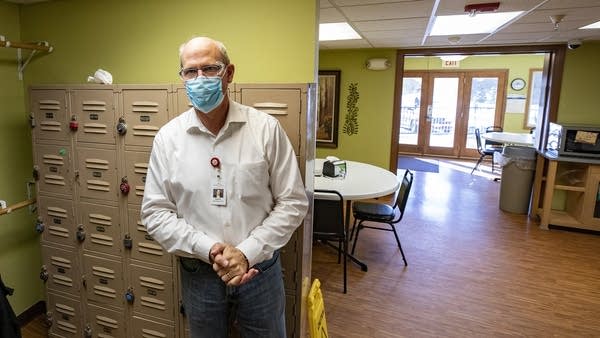Minn. nursing homes in rural areas see staff shortages worsen with COVID-19

Go Deeper.
Create an account or log in to save stories.
Like this?
Thanks for liking this story! We have added it to a list of your favorite stories.
Facilities caring for older adults are struggling with low staffing levels, as COVID-19 makes an ongoing problem even worse. Nursing home operators say they’re scrambling to make sure they have enough nurses and others to ensure the safety and well-being of residents.
In a matter of hours in early October, Paul Gaebe’s Friday went from normal to one of dire emergency. A resident at Mother of Mercy assisted living facility in Albany, had COVID-19.
“We had several staff that had contact with that individual,” Gaebe said. “And suddenly we went from normal staffing to short staffing within less than a day.”
Then a handful of high school students who also worked as care attendants at the home quit. Gaebe says they worried they wouldn’t be able to attend school if they were working with patients who had COVID-19.
Turn Up Your Support
MPR News helps you turn down the noise and build shared understanding. Turn up your support for this public resource and keep trusted journalism accessible to all.
“In a matter of about 24 hours we lost 16 employees.”
Gaebe experienced what many of his colleagues in the long-term care industry have learned over the last eight months.

“They said that when it hits, be prepared that it can go through your staffing, it could just ravage your staffing plans in such a short time.”
Gaebe tried to find fill-ins from nearby facilities, but they were also short on staff, and concerned about rising COVID-19 spread. He found the staff he needed through a state-run pool of nursing home staff.
The nurses and other specialized workers fill in for up to two weeks until staffing levels even out. The Minnesota program started in late September uses federal CARES Act funding.
“It's great to help out because I think a lot of people experience helplessness and fear in the face of this pandemic,” said fill-in nurse Heidi Granstrom. “It's just very, very frightening and an anxious typical time for us. And I think if you can actually do something, it really helps [others] cope.”
Since August, Granstrom, from Rochester, has pulled shifts at four different facilities from southwestern Minnesota to the Iron Range. She’s loved working with other dedicated nurses, and the feeling of helping everyone in the homes.
“When you're working in long-term care, you really develop relationships with residents,” Granstrom said. “When people die, it can really be traumatic, when, like one person said, it's like losing 10 grandparents all at once.”

Dan Pollock, the state’s assistant commissioner for continuing care for older adults, said rural areas have been hit especially hard.
“In places in the state where there just aren't a lot of people around who are working in this capacity, when you lose 20 or 30 percent of your staff at the local assisted living [center], it's really tough to find people quickly,” Pollock said.
According to state data, 55 facilities across the state have called for emergency staffing of some sort since May.
The state has a newly revamped staff pool system, which it launched in late September. Interested people can sign up for jobs which can run for as few as 14 days — some that require experience and many others that do not. The state is reaching out to those laid off in the health care industry as well as the hospitality industry.
The temporary help is offered at care facilities throughout the state.
Since that new program started, facilities in 13 counties have asked for assistance, only three of which are in the Twin Cities metro area.
On three occasions over the last several months, a team of health care workers from the National Guard responded to staff shortages in Hibbing, Austin and Wayzata.

“The underlying issue is that even before COVID-19, we had a severe staffing shortage for our direct care workers in Minnesota in long-term care,” said Gayle Kvenvold, CEO of LeadingAge Minnesota, which represents long-term care facilities and senior care organizations.
Kvenvold said the emergency staffing helps now, but they need to interest more people in careers caring for older people.
Wages are relatively low, and are often matched by jobs in retail. Long-term care jobs can be difficult — and some duties, like changing bed pans, keep some away. Kvenvold said the work can also be very rewarding in the relationships staff build with residents and families.
Right now, Kvenvold said homes are dealing with experienced workers leaving. Some of that has to do with the fact that most of the Minnesotans who died of COVID-19 lived in long-term care facilities, like nursing homes.
“Anecdotally, we are seeing more turnover right now than we were then we have for some months. And we think that is what we see. In so many sectors, we sometimes call it COVID fatigue or burnout. It's important for people to be able to feel that they've got an opportunity to step back, recharge, and that someone can step in for them.”
One of those who stepped in, Rochester nurse Heidi Granstrom, will soon start a new job: in a nursing home.


